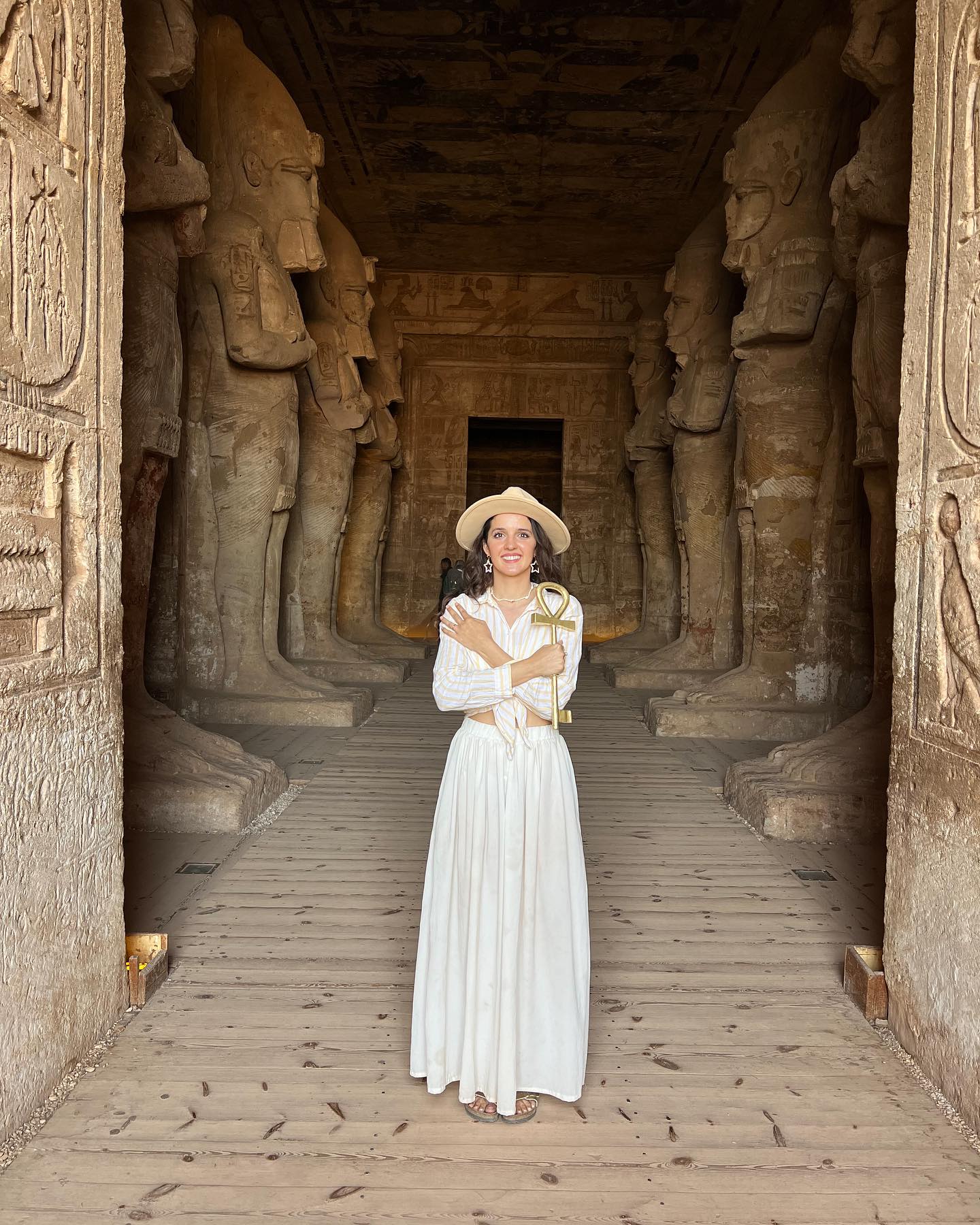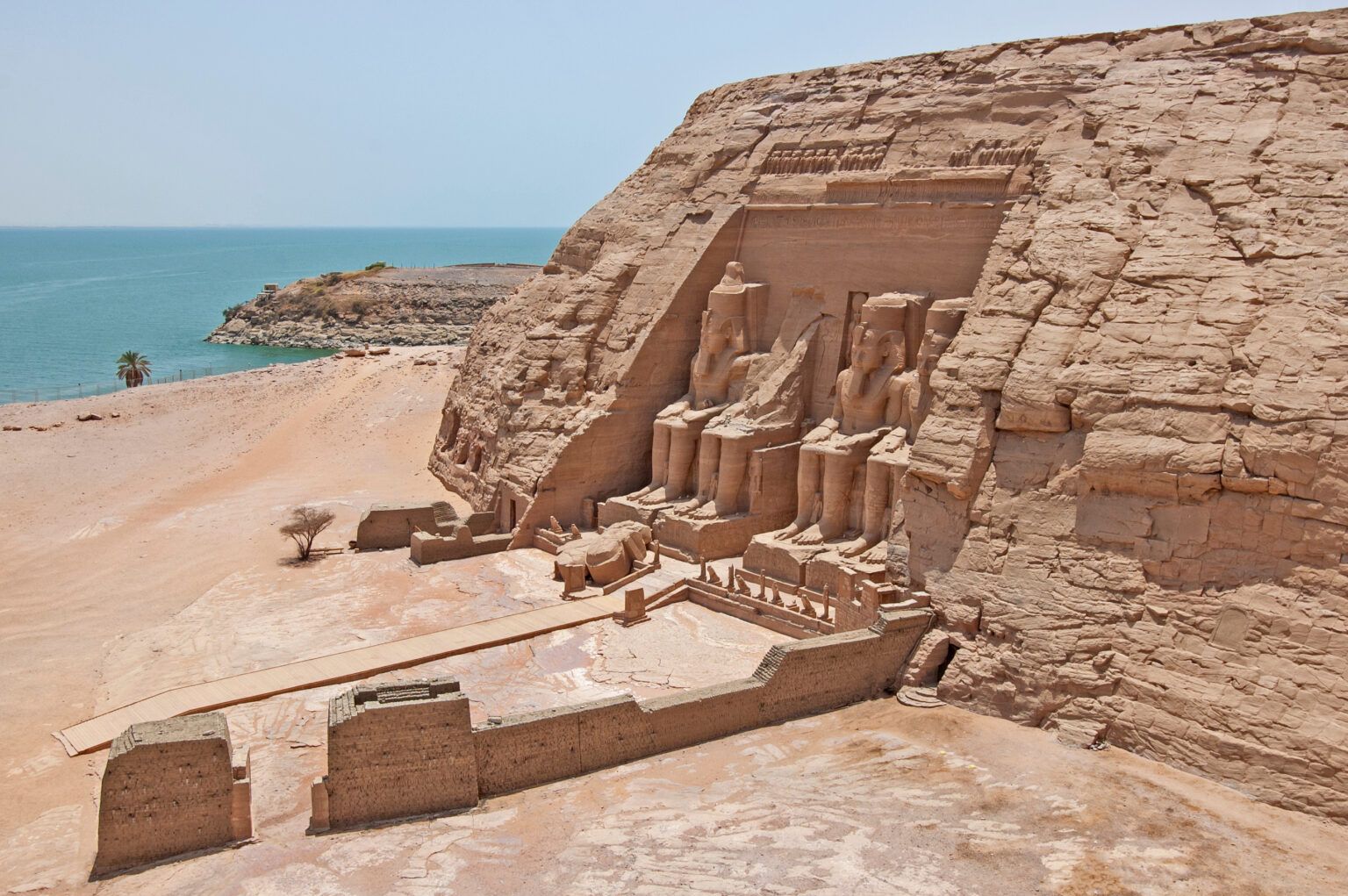
The Majestic Temples of Abu Simbel
The Majestic Abu Simbel Temples: A Testament to Ancient Egypt's Glory
Abu Simbel is one of Egypt's most iconic and awe-inspiring archaeological sites, located in the southern part of the country near the border with Sudan. The two temples at Abu Simbel—carved into the cliffs on the western bank of Lake Nasser—stand as a testament to the grandeur and power of Pharaoh Ramses II, the third pharaoh of the Nineteenth Dynasty of Egypt. These temples, with their intricate carvings and colossal statues, are considered masterpieces of ancient Egyptian art and architecture.
The Temples of Ramses II and Nefertari
The Abu Simbel complex consists of two temples: the Great Temple of Ramses II and the smaller Temple of Queen Nefertari. Both temples were constructed during the reign of Ramses II, also known as Ramses the Great, around 1264 BCE. The temples were designed to reflect the might and religious devotion of the Pharaoh, serving as both a symbol of his divine rule and a place of worship for the gods.
The larger of the two temples, the Great Temple of Ramses II, is the most famous and one of the most remarkable structures of ancient Egypt. The temple was dedicated to Ramses II himself, as well as to the gods Amun-Re, Re-Her-Akhtey, and Ptah. Four enormous statues of Ramses II, each standing over 65 feet (20 meters) tall, guard the entrance of the temple. These statues depict the pharaoh seated on his throne, wearing the double crown of Upper and Lower Egypt, and each holding a scepter of authority. The grandeur of these statues is designed to demonstrate Ramses II’s power, both as the ruler of Egypt and as a living god.
The interior of the Great Temple is just as impressive. The walls of the temple are adorned with detailed carvings and inscriptions that depict Ramses II’s military victories, particularly his famous Battle of Kadesh against the Hittites. These battle scenes are accompanied by hieroglyphic texts that narrate the pharaoh's exploits and divine approval. The temple is designed to align with the sun’s path, such that twice a year, on February 22 and October 22, the sun illuminates the inner sanctuary, where statues of Ramses II and the gods Amun-Re, Re-Her-Akhtey, and Ptah are seated. This phenomenon, known as the "Sun Festival," was intended to symbolize the godly nature of Ramses II and his divine connection to the sun god Ra.
Next to the Great Temple lies the smaller Temple of Queen Nefertari, Ramses II’s beloved wife. This temple is dedicated to Hathor, the goddess of love, music, and motherhood, who was also associated with the sun god Ra. The Temple of Nefertari is equally impressive, though more modest in scale. Its entrance is guarded by six statues, two of which are of Ramses II, and four of Nefertari herself. These statues portray the queen in a regal pose, indicating her importance in the eyes of the pharaoh. Inside, the temple is adorned with beautiful carvings and reliefs depicting Nefertari making offerings to Hathor, as well as images of the pharaoh and queen together, illustrating their close relationship and mutual devotion to the gods.
The Relocation of the Temples: A UNESCO Marvel
In the 1960s, the construction of the Aswan High Dam threatened to flood the entire Abu Simbel complex and submerge the temples beneath the waters of Lake Nasser. In response to this threat, a massive international effort was launched to save the temples from destruction. The Egyptian government, with the help of UNESCO and several other countries, embarked on a groundbreaking project to relocate the temples to higher ground.
The relocation process was an engineering marvel, requiring the temples to be cut into large blocks, each weighing several tons, and moved to a new site 200 feet (61 meters) higher and 600 feet (183 meters) further back from the river. The temples were reassembled with such precision that even the alignment with the sun on the dates of the Sun Festival remained intact. The project, completed in 1968, not only saved the temples but also set a precedent for the preservation of cultural heritage worldwide.
Today, the Abu Simbel temples are a UNESCO World Heritage Site and a major tourist attraction, drawing visitors from all over the world. The relocation of the temples is often cited as one of the greatest achievements in the field of archaeological conservation.
Visiting Abu Simbel: A Journey into the Past
A visit to Abu Simbel is a journey back in time, offering a rare glimpse into the grandeur of ancient Egypt. Travelers can explore both temples, marvel at the massive statues of Ramses II, and witness the stunning reliefs and carvings that tell the story of the pharaoh’s reign. The complex is easily accessible from Aswan, and visitors can reach it by road or by air. Many tours are available, offering guided experiences that provide rich historical context and allow visitors to fully appreciate the significance of the site.
The Abu Simbel temples are not only remarkable for their architectural beauty and historical importance but also for the way they evoke the enduring legacy of ancient Egypt. These temples stand as a testament to the vision, skill, and determination of the Egyptians who created them, and to the international cooperation that saved them for future generations.
Conclusion
The Abu Simbel temples are among the most impressive monuments of ancient Egypt, and their historical and cultural significance cannot be overstated. As a symbol of the power and divinity of Ramses II, they offer a window into the religious, political, and artistic achievements of one of Egypt’s most famous pharaohs. Whether you’re captivated by the grandeur of the temples, the engineering feat of their relocation, or the rich history they embody, Abu Simbel remains an essential part of Egypt's fascinating heritage, one that continues to inspire and awe visitors from around the globe.





(01) Comment
rohan de spond
25 january 2021
We have covered many special events such as fireworks, fairs, parades, races, walks, awards ceremonies, fashion shows, sporting events, and even a memorial service.
rohan de spond
25 january 2021
We have covered many special events such as fireworks, fairs, parades, races, walks, awards ceremonies, fashion shows, sporting events, and even a memorial service